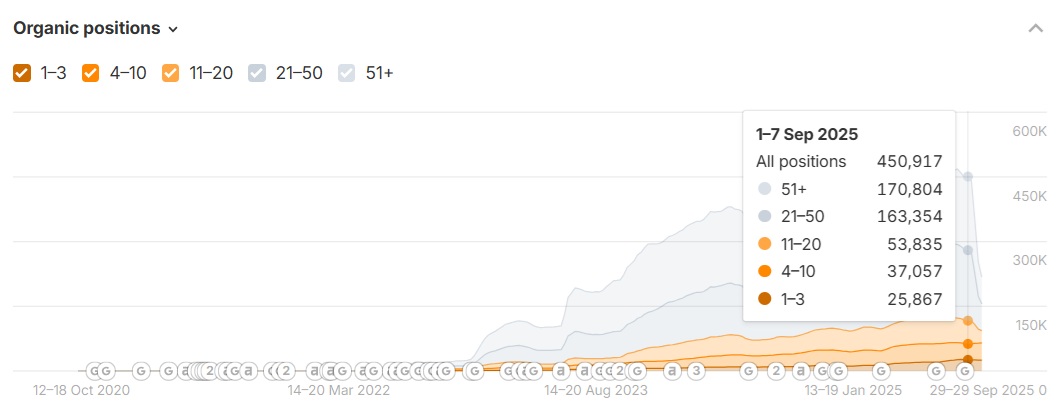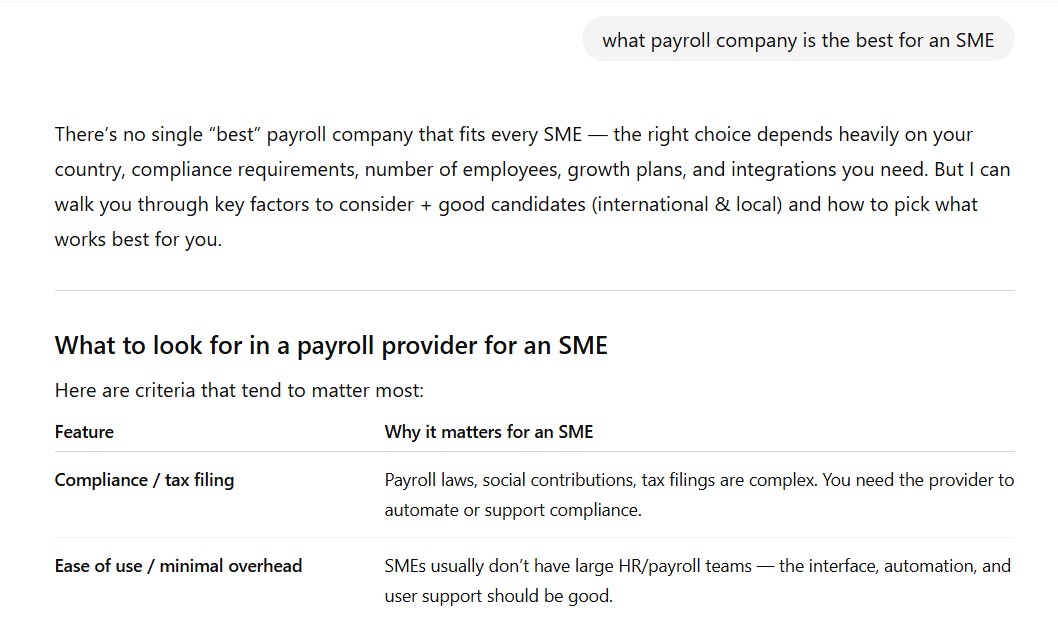Payroll is one of the most competitive industries out there. Global giants and local providers are fighting for visibility, and the market itself is huge: more than 284,000 monthly searches alone on “payroll” worldwide, with the US, India, and Cyprus leading the way.
That means two things:
Some companies have managed to break through and build global brands in just a few years. Think of Deel, Remote, or Gusto all of which grew their brand awareness by investing in smart digital marketing, and SEO strategies.
 Deel’s organic rankings
Deel’s organic rankingsTake Deel as an example. They only started seriously investing in SEO around 2022. Less than five years later, they’re ranking for 450,000+ keywords worldwide, and are now one of the most visible payroll providers on the market.
That kind of growth didn’t come from ads alone. It came from making sure that whenever someone typed “best payroll solution for SMEs” into Google or asked ChatGPT for payroll providers, Deel was part of the conversation.
👉 The lesson? SEO is not just about rankings, it’s about being visible when and where decision-makers are searching.
Before thinking about keywords or backlinks, get clear on your business foundations:
Without these answers, no SEO strategy will feel aligned with your goals.
SEO is not just a marketing channel, it’s also a form of market research. It helps you understand how your buyers actually describe their problems.
Here are three ways to explore it:

Once you know your positioning and how people search, it’s time to design your SEO strategy. For payroll companies, I recommend focusing on three pillars:
Even the best content won’t work if your website isn’t technically sound. Google and AI assistants need to “understand” your site, and users need a fast, easy experience.
What to look at first:
👉 Think of this pillar as making sure the doors to your business are open and easy to walk through.
When decision-makers look for payroll solutions, they rarely search “payroll provider” alone. They look for specifics: comparisons, how-to guides, and industry answers.
Types of content that work well in payroll:
👉 Content is not about writing for algorithms, it’s about answering real questions so you become the go-to resource.
This is where visibility turns into trust. Search engines and AI assistants pay attention to where your brand is mentioned.
Tactics that work in payroll:
👉 The goal is to build validation. Visibility gets people to your site; validation convinces them to buy.

We have created a B2B SaaS strategy for a client in the payroll and compliance space. By combining technical audits, content expansion (guides, comparisons, FAQs), and Digital PR (industry features + thought leadership), the client achieved a 233% growth in visibility and traffic.
The Bottom Line
If you’re running or marketing a payroll company, SEO isn’t optional anymore. Decision-makers are turning to Google, ChatGPT, and online communities before they ever talk to a sales rep.
By aligning your strategy around technical excellence, helpful content, and brand validation, you can compete with bigger players and win long-term growth.